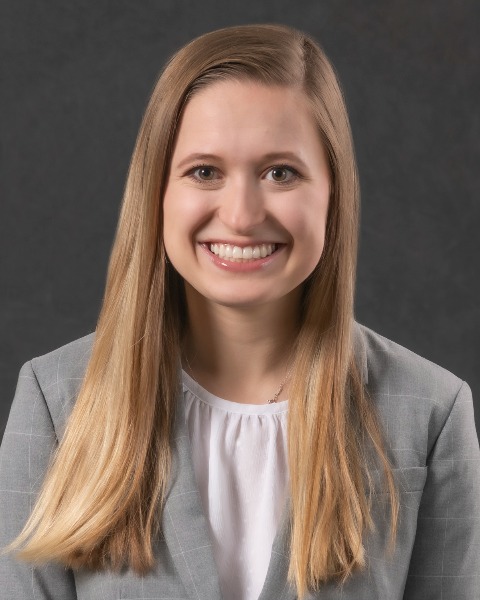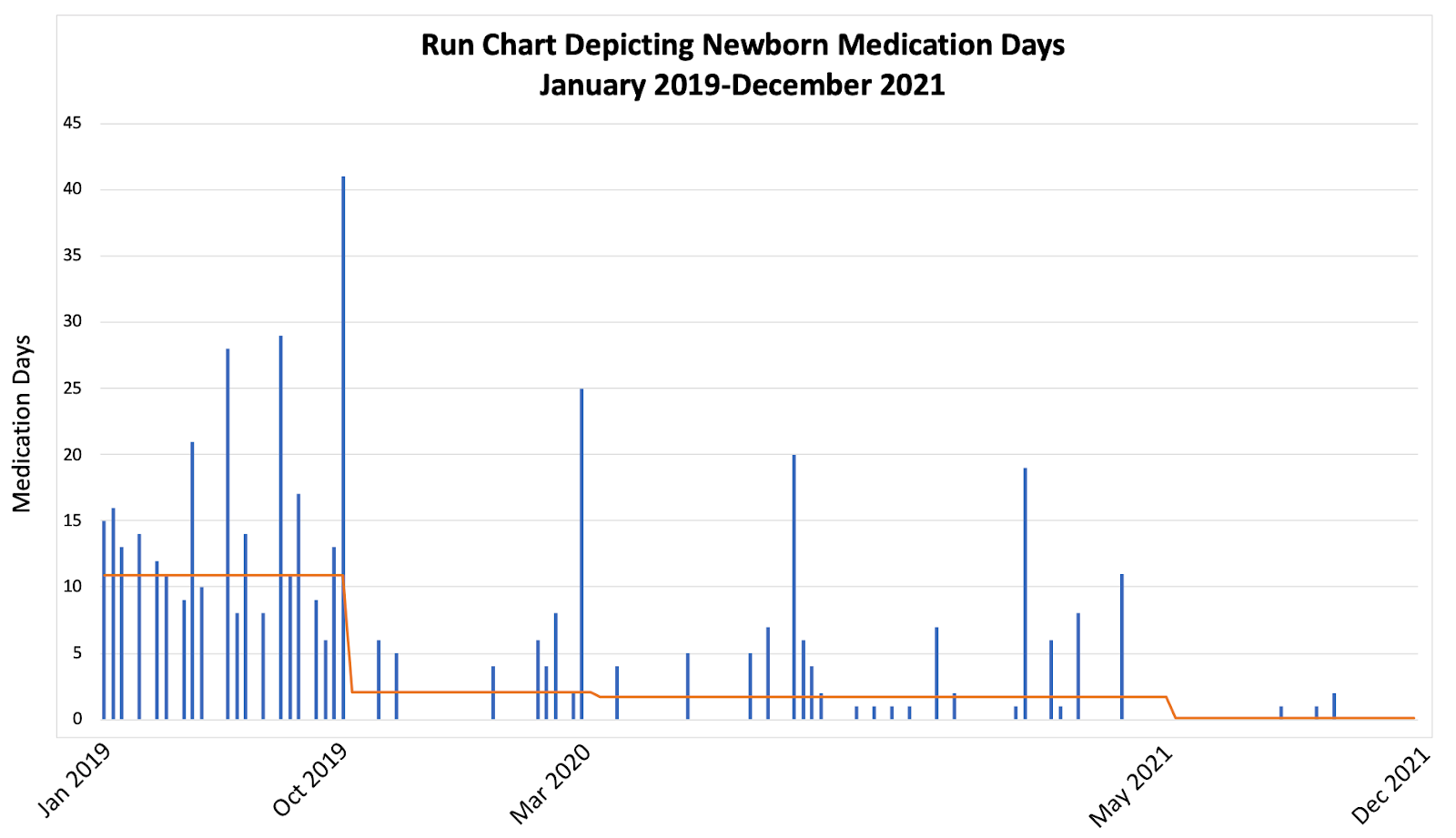Neonatal Quality Improvement
Category: Abstract Submission
Neonatal Quality Improvement II: Neurology and Infection
226 - Neonatal Opioid Withdrawal Syndrome Length of Hospitalization: A Quality Improvement Project
Friday, April 22, 2022
6:15 PM - 8:45 PM US MT
Poster Number: 226
Publication Number: 226.127
Publication Number: 226.127
Anna Lauchnor, University of South Florida, Tampa, FL, United States; Kaitlyn Steward, University of South Florida, St. Petersburg, FL, United States; Anthony M. Kendle, USF Health Morsani College of Medicine, Tampa, FL, United States; Karen L. Fugate, tam, Valrico, FL, United States; Tanner G. Wright, USF Health Morsani College of Medicine, Tampa, FL, United States

Anna Lauchnor, BS
MS4
University of South Florida
Tampa, Florida, United States
Presenting Author(s)
Background: Neonatal opioid withdrawal syndrome (NOWS) is a growing medical concern that results in longer lengths of stay (LOS) for affected infants. Increased LOS results in impaired mother-infant bonding and higher healthcare costs. Experience of high incidence of NOWS and prolonged LOS at an academic medical center’s level IV neonatal ICU (NICU) led to the need for focused effort in the quality of care for improved outcomes.
Objective: To improve hospital outcomes in newborns with NOWS by implementing a series of quality improvement (QI) initiatives.
Design/Methods: A neonatology division changed their approach to management of opioid-exposed newborns through trauma-informed and dyad-centered care, single-provider continuity, modified opioid replacement therapy guidelines, and provider and staff education of functional assessment/care of these newborns. We included NOWS infants admitted to Tampa General Hospital from January 2019- December 2021. Infants born < 35 weeks gestation and those with alternative reasons for prolonged length of stay (LOS) were excluded. QI initiatives in the form of four distinct plan-do-study-act (PDSA) cycles were conducted during the study. Primary outcomes of LOS and medication treatment days were compared pre- and post-intervention for each improvement period. Chi-square was used to compare mean outcomes throughout the study period. A p-value of < 0.05 was considered significant.
Results: The study included 150 infants. The average LOS decreased from 16.9 days to 5.1 days (p < 0.001) over the course of the study period. Pharmacologic treatment decreased from an average of 10.9 medication days to 0.1 medication days (p < 0.001) per birth hospitalization.Conclusion(s): Inpatient NOWS newborn outcomes were significantly improved by successful implementation of a series of QI initiatives including single-provider care, adjustment of pharmacologic treatment modalities, and function-based assessments. This study is important to demonstrate the ability to implement potentially better practices for opioid-exposed newborns.
CV - Lauchnor, AnnaUpdated CV - Lauchnor, Anna.pdf
Figure 2. Run Chart Depicting Newborn Medication Days from January 2019- December 2021. Y-axis demonstrates total medication days for each admission. Each bar on the x-axis represents an individual opioid-exposed infant birth hospitalization, these are plotted sequentially for the study period. The trend line represents the mean medication days for each PDSA cycle.
Y-axis demonstrates total medication days for each admission. Each bar on the x-axis represents an individual opioid-exposed infant birth hospitalization, these are plotted sequentially for the study period. The trend line represents the mean medication days for each PDSA cycle.
Objective: To improve hospital outcomes in newborns with NOWS by implementing a series of quality improvement (QI) initiatives.
Design/Methods: A neonatology division changed their approach to management of opioid-exposed newborns through trauma-informed and dyad-centered care, single-provider continuity, modified opioid replacement therapy guidelines, and provider and staff education of functional assessment/care of these newborns. We included NOWS infants admitted to Tampa General Hospital from January 2019- December 2021. Infants born < 35 weeks gestation and those with alternative reasons for prolonged length of stay (LOS) were excluded. QI initiatives in the form of four distinct plan-do-study-act (PDSA) cycles were conducted during the study. Primary outcomes of LOS and medication treatment days were compared pre- and post-intervention for each improvement period. Chi-square was used to compare mean outcomes throughout the study period. A p-value of < 0.05 was considered significant.
Results: The study included 150 infants. The average LOS decreased from 16.9 days to 5.1 days (p < 0.001) over the course of the study period. Pharmacologic treatment decreased from an average of 10.9 medication days to 0.1 medication days (p < 0.001) per birth hospitalization.Conclusion(s): Inpatient NOWS newborn outcomes were significantly improved by successful implementation of a series of QI initiatives including single-provider care, adjustment of pharmacologic treatment modalities, and function-based assessments. This study is important to demonstrate the ability to implement potentially better practices for opioid-exposed newborns.
CV - Lauchnor, AnnaUpdated CV - Lauchnor, Anna.pdf
Figure 2. Run Chart Depicting Newborn Medication Days from January 2019- December 2021.
 Y-axis demonstrates total medication days for each admission. Each bar on the x-axis represents an individual opioid-exposed infant birth hospitalization, these are plotted sequentially for the study period. The trend line represents the mean medication days for each PDSA cycle.
Y-axis demonstrates total medication days for each admission. Each bar on the x-axis represents an individual opioid-exposed infant birth hospitalization, these are plotted sequentially for the study period. The trend line represents the mean medication days for each PDSA cycle.